The Impact of Perlite and Vermiculite on Plant Growth
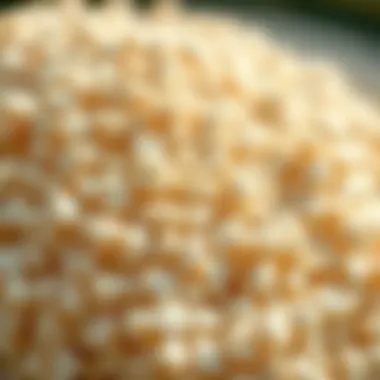
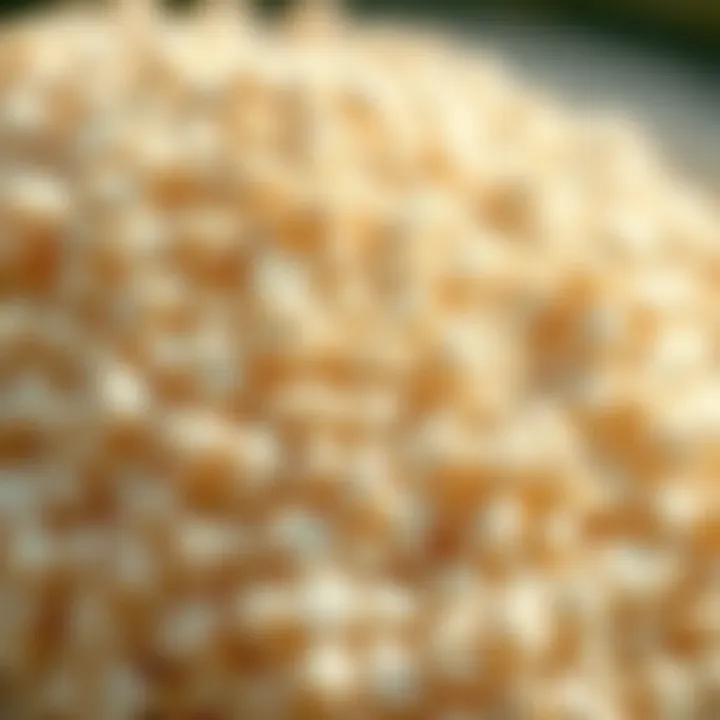
Intro
In the world of horticulture, the foundation of successful plant growth lies in the quality of soil and the components that enrich it. Two materials that have gained significant attention are perlite and vermiculite. While both belong to the family of soil amendments, they possess distinct traits and functionalities that can make or break the health of your garden. This article aims to explore the characteristics, applications, and benefits each brings to the table, helping you grasp their roles more thoroughly.
Whether you are an experienced gardener or just starting your journey in horticulture, understanding how these two materials interact with soil and plants is crucial. As we delve deeper into their physical and chemical properties alongside practical tips and trends, you will discover how integrating perlite and vermiculite can lead to enhanced plant performance and sustainable practices. Let's embark on this journey.
Prelims to Perlite and Vermiculite
In the world of horticulture, the role of substrates is paramount, as they form the foundational elements that support plant life. Among the myriad options available, perlite and vermiculite stand out as exceptional choices due to their distinct characteristics and benefits. Each of these materials has its own strengths, and understanding their differences provides gardeners and agriculturalists an edge in nurturing healthy plants.
Perlite, a lightweight and porous natural volcanic glass, is known for its ability to enhance drainage. Its unique structure, a result of heating to high temperatures, expands and traps air within the substrate. This quality fosters aeration, improving root systems of various crops, which is crucial for thriving plants.
On the other hand, vermiculite arises from the alteration of mica; it expands with heat and holds moisture exceptionally well. This characteristic is particularly advantageous during seed germination and for delicate seedlings that require a consistent moisture level to flourish. Vermiculite also contributes to nutrient retention, ensuring that essential minerals remain available for plant uptake, thus promoting robust growth.
The importance of understanding perlite and vermiculite extends beyond their basic uses; they also play significant roles in modern horticultural practices, influencing everything from container gardening to commercial agriculture. Keeping up with advancements in these materials and finding innovative ways to mix and match can lead to impressive outcomes in plant health and yield.
"The knowledge of your substrate can make or break your gardening experience. Choosing wisely between perlite and vermiculite is not just a preference; it's a pivotal decision that affects plant life at its core."
As more urban spaces become green, with both enthusiastic amateur gardeners and skilled farmers pushing the limits of growth in limited spaces, the relevance and application of perlite and vermiculite only continue to climb. A thorough investigation into these substances reveals their potential far beyond mere mediums; they represent a sophisticated approach to understanding plant needs and optimizing growth conditions.
In this article, we will explore the geological origins and physical properties of perlite and vermiculite, and how they contribute to their usage in various horticultural applications. Delving into their benefits, we will analyze how these two materials can shape the future of sustainable gardening practices.
Geological Origins and Composition
Understanding the geological origins and composition of perlite and vermiculite provides a solid foundation for grasping their roles in horticulture. These substances originate from volcanic activity, which adds a unique twist to their characteristics. Their formation influences not only their physical properties but also their utility in gardening and farming. Knowing how they are sourced can give us insight into their sustainability and their impact on plant growth.
Perlite: Formation and Characteristics
Physical properties
Perlite is essentially volcanic glass that's been heated to a point where it expands dramatically. This process offers a lightweight material that holds a place of honour in horticultural practices. One key characteristic of perlite is its highly porous structure, which is essential for aeration and drainage in potting mixes.
The porosity of perlite means that it can hold onto moisture while also allowing air to circulate freely. It's like a sponge that doesn't get too soggy, making it a popular choice among gardeners and agriculturalists alike. This unique feature proves beneficial because it minimizes the risks of overwatering and helps root systems thrive by promoting healthy growth.
Chemical structure
Chemically, perlite is primarily composed of silicon dioxide along with a mixture of aluminum and other trace elements that can vary depending on the source. The non-reactive nature of its chemical structure means it does not alter the pH of the soil, making it a stable choice for maintaining nutrient balance, which is crucial for nurturing plants.
Perlite’s composition also offers an advantage in that it can assist in retaining certain nutrients while being a blank slate that doesn’t add unwanted chemicals or salts into the mix. This neutrality is a major plus for organic gardening enthusiasts seeking to keep their feeds as natural as possible.
Vermiculite: An Overview
Source material
Vermiculite originates from a natural mineral called micaceous mineral, which expands significantly when heated. It’s an intriguing source material that not only impacts the characteristics of vermiculite itself but also the benefits it can offer to plants. The unique aspect of vermiculite lies in its ability to hold water—far better than most substances used in gardening.
This high water retention capacity serves as a reservoir for moisture, ensuring that plants have constant access to water, especially during drier spells. As such, vermiculite shines in seed germination and in enhancing soil mixes, making it particularly favourable for novice growers and horticulture specialists alike.
Expansion process
The expansion process of vermiculite involves harassment of the source material at high temperatures, which causes it to swell up much like popcorn. When it expands, it creates a lightweight, insulative product that is chock-full of tiny air pockets. This unique feature not only aids in moisture retention but also contributes to temperature regulation within the soil—a critical factor for seedling survival.
Moreover, the lightweight nature of expanded vermiculite makes it a user-friendly option for casual gardeners. Its unique characteristics help in suspending nutrients around plant roots, ensuring that they have access to the resources they need without becoming waterlogged. This can prevent detrimental conditions that might otherwise spell doom for delicate seedlings.
In summary, the geological origins and composition of perlite and vermiculite are pivotal in understanding their roles in horticulture. Their unique properties are directly influenced by their formation processes, making them valuable assets in various gardening applications.
Physical Properties and Their Implications
Understanding the physical properties of perlite and vermiculite is paramount in the context of horticulture. These two substances serve distinct but complementary roles in gardening and agriculture, influencing not just the soil structure but also the overall health of plants. Their unique features—like aeration, water retention, and nutrient support—demonstrate why they’ve become staples in horticultural practices.
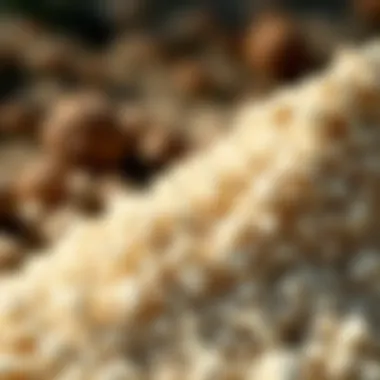
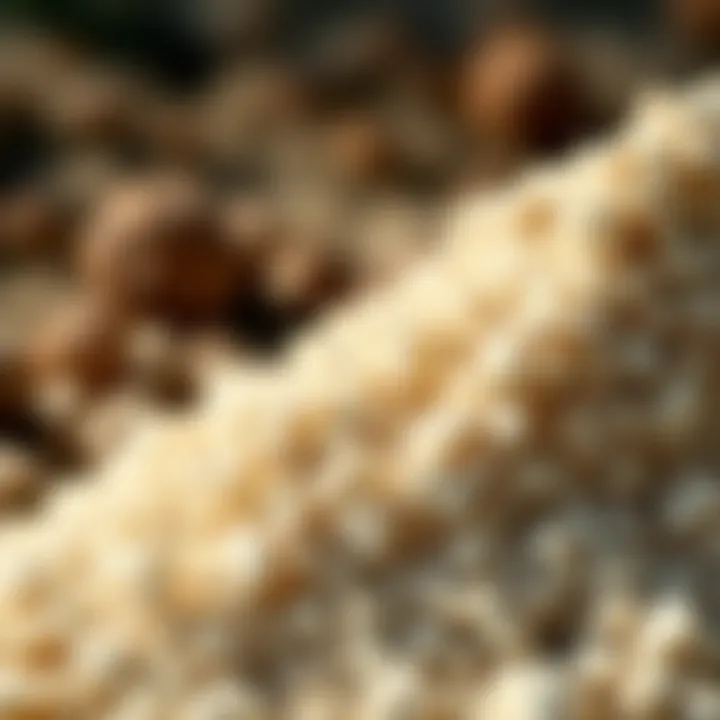
Water Retention and Aeration in Perlite
Capillary action
Capillary action in perlite speaks volumes about its functionality as a growing medium. This phenomenon refers to the ability of water to rise in narrow spaces against gravity, allowing moisture to be evenly distributed throughout the soil mix. One key characteristic of capillary action is its dependency on the size of the particles. Smaller grains can hold more water due to increased surface area, while the larger grains offer superior drainage.
These attributes serve as a solid advantage in potting mixes and container gardening. By providing a balance between moisture retention and aeration, perlite ensures that plant roots receive adequate water without becoming waterlogged. However, one must be careful; excessive reliance on perlite can lead to situations where holding water becomes less efficient, especially for plants requiring consistently moist conditions.
Impact on root health
When it comes to root health, perlite's role is irreplaceable. The aeration it provides reduces soil compaction, allowing roots to spread and grow without hindrance. One of the main aspects of this benefit is the oxygen availability in the root zone. Healthy roots require oxygen, and the lightweight nature of perlite promotes air circulation around the roots.
The beauty of this is that healthy roots lead to robust plant growth. However, there’s a flip side; too much perlite can generate an overly loose mix that lacks stability for more substantial plants. Gardeners must strike a balance to optimize plant anchor while still allowing for appropriate airflow.
Vermiculite’s Unique Water Holding Capacity
Moisture retention
Vermiculite excels in moisture retention, a crucial factor for cultivating healthy plants. Its unique structure, resembling tiny, spongy flakes, gives it an impressive capability to absorb water. For gardeners, this property is invaluable, especially in arid regions or during dry spells. It can hold up to three to four times its weight in water.
Thus, vermiculite can serve as a reservoir, maintaining consistent moisture levels for sensitive plants. The challenge, however, lies in its tendency to compact over time, which can affect aeration. This makes it important for growers to monitor moisture levels closely and consider integrating vermiculite into mixes that include substances like perlite to balance retention and aeration.
Nutrient availability
Another advantage of vermiculite is its capacity to facilitate nutrient availability. The structure of vermiculite allows it to retain and exchange essential nutrients like magnesium and potassium efficiently. This property is particularly beneficial for new seedlings and young plants, which often require a steady supply of nutrition to establish themselves successfully.
One must note, however, that while vermiculite is a great contributor to nutrient availability, its effects can be short-lived without regular fertilization. Hence, growers are encouraged to use it in conjunction with other nutrients or fertilizers to sustain plant health over time. By acknowledging both its benefits and limitations, horticulturalists can make informed decisions about incorporating vermiculite into their growing practices.
Comparative Uses in Horticulture
Understanding the comparative uses of perlite and vermiculite in horticulture is crucial for anyone involved in soil management and plant cultivation. Each material brings its unique characteristics and benefits, making them invaluable tools for a diverse range of gardening and agricultural practices. By identifying the specific applications of these two minerals, growers can optimize conditions for plant health and productivity, ensuring a thriving environment.
Perlite in Potting Mixes and Container Gardening
Benefits of lightweight structure
The lightweight nature of perlite makes it an outstanding component in potting mixes and container gardening. This attribute significantly eases the transport and handling of containers, especially when large quantities are in play. Horticulturists appreciate perlite not only for its low weight but also for promoting better aeration within the soil mixture.
This feature translates directly into healthier root systems, as plants find it easier to establish themselves and absorb nutrients. The incorporation of perlite into potting soil can often lead to improved root growth due to this engineered environment.
Enhancements in drainage
Water management is a pivotal concern in container gardening, and this is where perlite really shines. Its porous structure enables effective drainage, which is vital for preventing overwatering. Excess moisture can create an unfriendly atmosphere for roots, leading to root rot and other issues.
With perlite, growers can ensure that their plants receive just the right amount of water. This enhances the overall health of the plants and minimizes risks associated with directsoil saturation.
Vermiculite’s Role in Seed Germination
Support for delicate seedlings
In seed germination processes, vermiculite provides unparalleled support. Its ability to hold moisture helps protect tiny seedlings from drying out, a common pitfall for new plant life. This moisture-retentive capability creates a nurturing environment for seedlings as they begin their life cycle.
Moreover, vermiculite's neutral pH ensures that seedlings are exposed to non-toxic conditions, further aiding their growth from the get-go. A solid start can be the difference between a thriving plant and one that struggles to take root.
Surrounding moisture environment
Beyond just retaining water, vermiculite excels in creating a stable moisture environment. It prevents significant fluctuations that could destabilize life for young plants. Since seedlings are often sensitive, this ability is critical in maintaining a steady supply of water, fostering conditions ideal for growth.
By allowing the soil to remain evenly moist, vermiculite not only supports the initial growth stages but promotes a stronger foundation for the plants as they mature. This characteristic makes it a preferred choice for those aiming for successful seed germination, as it directly influences the vitality of developing plants.
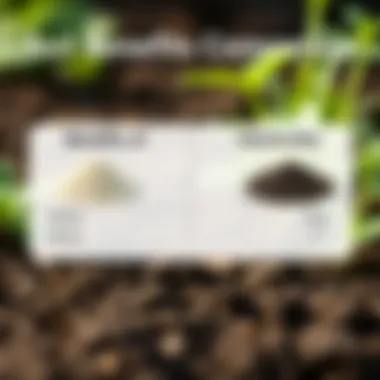
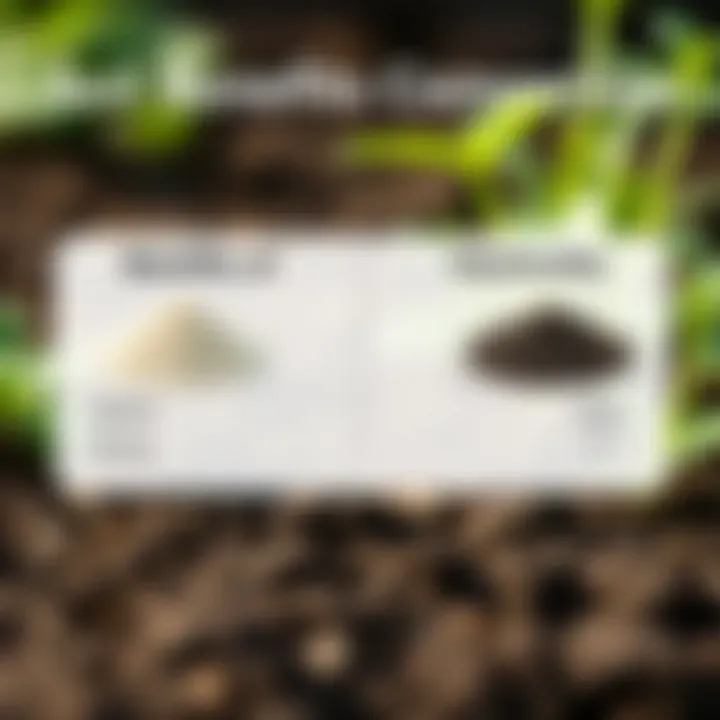
"Using perlite and vermiculite strategically can create optimal growing conditions that support both early life stages and ongoing growth in the garden."
Overall, the comparative uses of perlite and vermiculite show how essential these substances are in horticulture. Their unique benefits and properties ensure that growers can tailor their methods to achieve the healthiest plants possible.
Nutritional Contributions and Influence on Growth
In this section, we delve into how perlite and vermiculite contribute to the nutrition and growth of plants. Both materials play pivotal roles not just in infrastructure but in their nutrient profiles that can significantly influence plant health. Understanding these contributions offers insight into how to maximize their potential in horticultural practices.
Trace Mineral Content in Vermiculite
Magnesium and potassium
Magnesium and potassium are two vital nutrients found in vermiculite that contribute to plant health. Magnesium is crucial for chlorophyll production, and plants that receive adequate magnesium often showcase a richer green hue. Furthermore, potassium helps regulate plant metabolism, impacting processes like photosynthesis and transpiration. The inclusion of these minerals in vermiculite gives gardeners a natural, nutrient-rich option that enhances growth. Vermiculite’s ability to retain moisture and nutrients ensures that magnesium and potassium are available to plants when they need it most, making it a valued choice for growers.
The unique feature of magnesium as part of vermiculite is its role in improving soil structure and supporting plant cellular functions. Moreover, potassium in this medium helps in building resistance against diseases. However, excessive potassium can lead to issues, including nutrient imbalances. Hence, monitoring is key to effectively utilizing these benefits.
Impact on biochemical processes
The impact of magnesium and potassium on biochemical processes in plants cannot be overstated. Magnesium, for instance, is integral in energizing various enzyme functions. It plays a role in the synthesis of proteins and nucleic acids, promoting robust growth and health in plants. Potassium, on the other hand, is vital in osmotic regulation, influencing water retention and nutrient transport within the plant. These functions are essential for optimal growth, particularly in periods of stress, such as during drought.
The unique advantage here is that utilizing vermiculite rich in these trace minerals significantly enhances plant health while contributing to overall yield. Nonetheless, striking a balance is critical, as the excess of these minerals could impair plant function.
Perlite: A Neutral Player in Nutrient Management
Non-reactive nature
Perlite stands out due to its non-reactive nature. This characteristic means that it does not chemically alter the soil environment, allowing for a stable foundation for plant roots. In practical terms, this translates to improved nutrient retention without the added risk of pH fluctuations that can stress plants. With perlite, growers can cultivate without worrying about undesired chemical interactions that could diminish soil quality. Its lightweight structure also makes it an ideal choice for aeration of potting mixes.
Additionally, perlite’s neutral pH can help maintain an equilibrium within soil environments. However, it also lacks inherent nutrients, which means that growers should consider complementing it with nutrient-rich additives to form a comprehensive growing medium.
Role in pH stabilization
The role of perlite in pH stabilization is a game-changer for many horticulturalists. By providing a base that does not shift the pH levels, it ensures that the nutrient availability remains predictable and consistent. This stability is especially crucial in container gardening, where precise conditions are necessary for growth.
Moreover, its lightweight nature enhances aeration, which works synergistically with its pH stabilization role. A balanced pH fosters an optimal growing environment where plants can thrive without facing issues related to nutrient lockout.
In summary, both perlite and vermiculite bring unique advantages to horticulture, contributing not just through their physical properties but also via their nutritional profiles. Understanding these nuances will help gardeners optimize their approaches to growing healthy, robust plants.
Sustainability and Environmental Considerations
The role of perlite and vermiculite in horticulture extends beyond mere soil amendments. As we dive into sustainability and environmental considerations, it's vital to reflect on how these materials fit within ecological frameworks. The emphasis is on sustainable sourcing and responsible usage, considering how these resources can support not only plant growth but also the health of our planet. The balance between utility and environmental consciousness shapes modern horticultural practices, ensuring future generations can also enjoy the fruits of the earth.
Sourcing and Processing Impact
Mining practices
Mining practices are a crux of the discussion surrounding perlite and vermiculite, shaping how these materials are extracted from the earth. Traditional mining can have a significant environmental footprint; however, the extraction methods for perlite are generally considered less invasive than other minerals.
Sustainability in mining often hinges on approaches like selective mining and open-pit techniques, limiting surface disturbance. The lightweight nature of perlite means less transportation energy is consumed in the process, which is a notable advantage. However, it’s crucial to strike a balance; critics argue that some mining operations may still disrupt local ecosystems. This calls for regulations that enforce best practices, integrating ecological considerations into the extraction process.
Energy requirements
Energy requirements for processing these materials also come under the microscope. For perlite, the processing involves heating the raw minerals, which expands them into the lightweight granules used in horticulture. This thermal process tends to be energy-intensive. However, the overall energy expenditure should be compared to the longevity and reusability of the product.
Moreover, the growing trend towards energy-efficient practices in the industry aims to reduce carbon footprints. More innovative techniques are emerging, focusing on renewable energy sources for processing, which can ultimately enhance the sustainability of these resources. While the transition may require initial investments, the environmental benefits can outweigh costs in the long term.
Recyclability and Lifecycle Assessment
Reusability in gardening
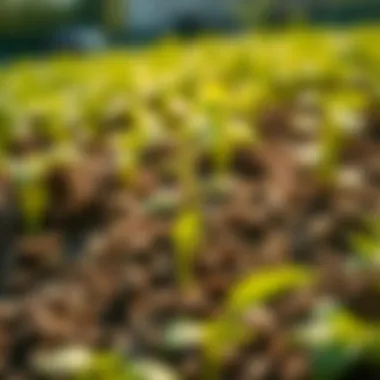

Reusability in gardening is a hallmark of responsible practices among gardeners and horticulturists. Perlite and vermiculite are not just one-off materials; they can be rejuvenated and used repeatedly. After the growing season, spent mixes can be reseeded, providing a basis for future plantings. This is a key characteristic that gardeners appreciate, as it aligns with the principle of closed-loop systems.
Advantages of reusability include reducing overall waste and the need for new resources, allowing for a more sustainable approach to horticulture. However, gardeners must also consider the degradation of these materials over time. While generally durable, they do eventually lose their effectiveness, necessitating an assessment for when to replace or recharge the soil mix.
End-of-life considerations
End-of-life considerations cover what happens to perlite and vermiculite after their active use in horticulture. Their durability often leads gardeners to a false sense of security, as both materials can eventually break down into smaller particles. This breakdown can lead to increased compaction in soil mixes, which can be detrimental to plant health.
Consideration should be given to recycling options – both can often be repurposed in other industries or applications, effectively extending their lifecycle. Engaging in practices that seek to minimize landfills is beneficial from an ecological standpoint.
The journey towards sustainable horticulture is a collective effort, hinging on informed practices and innovative solutions to make the earth healthier for future generations.
Emerging Trends in Horticultural Applications
As the field of horticulture evolves, so too do the applications of perlite and vermiculite. Understanding these emerging trends is vital for growers looking to harness the full potential of these materials. There’s a palpable shift towards more innovative approaches that not only enhance plant growth but also promote sustainability. By looking at the latest research and practices, we can glean insights into how these materials can be optimized.
Innovative Blends and Compositions
Creating optimal substrates
Optimal substrates serve as the foundation of plant growth, and the role of perlite and vermiculite in this regard cannot be overstated. The combination of these two materials can lead to the development of substrates that maintain ideal moisture levels, promote aeration, and deliver nutrients effectively.
A key characteristic of creating these optimal blends is their balanced moisture retention. Unlike conventional soils that often compact and detract from root aeration, a mix of perlite and vermiculite allows for a structure that supports continual airflow. This is particularly beneficial for container gardening and hydroponics. However, it is essential to strike the right balance; too much vermiculite in a substrate can lead to a sticky texture, which can suffocate roots.
Combining properties for diverse applications
The ability to combine the unique properties of perlite and vermiculite opens the door for diverse applications across different plant types and growing conditions. By leveraging their respective strengths, horticulturists can create tailored mixes that suit everything from cacti to fragile seedlings.
A hallmark of this trend is the versatility offered by combined properties. For instance, perlite’s drainage abilities paired with vermiculite’s moisture retention can provide an environment that caters to variances in plant needs. Using this mixed approach helps in mitigating issues such as overwatering—problems that can plague new gardeners. On the flip side, finding the right combination can require some trial and error, making it a bit of a balancing act.
Future Research Directions
Exploring hybrid mixes
As research in horticulture progresses, the exploration of hybrid mixes integrating perlite and vermiculite is gaining traction. These mixes can innovate traditional growing practices and enhance the adaptability of growing mediums. Hybrid mixes allow for the layering of benefits, which can lead to improved plant health.
For instance, hybrids can be fine-tuned to increase nutrient absorption for high-demand crops. They layer upon the distinctive traits of each component, enhancing resilience. However, the challenge lies in the complexity of understanding how different ratios affect plant physiology, requiring ongoing investigation.
Sustainable sourcing advancements
Another emerging trend is sustainable sourcing advancements for perlite and vermiculite. With increasing awareness around environmental impact, the focus is shifting to sustainably mined and processed materials. This ensures that as we look to enhance our plant’s growth, we also take care of our environment.
One distinct advantage here is the reduced carbon footprint associated with locally sourced perlite and vermiculite. Additionally, new processing technologies are emerging, which minimize energy use in production. Nevertheless, the balance between quality and sustainability must remain a priority, as not all sources adhere to the same standards. Ensuring both accessibility and environmental responsibility is crucial for future advancements.
"As we redefine horticultural practices, it is imperative to merge innovation with responsibility to pave the way for sustainable success."
Epilogue: Balancing Utility and Sustainability
In our examination of perlite and vermiculite within horticulture, it's essential to reflect on the dual imperatives of utility and sustainability. Both materials provide significant benefits that enable agricultural practitioners to enhance plant growth and health effectively. Their specific properties, such as perlite's excellent aeration and vermiculite's moisture retention, underscore their indispensable roles in creating the optimal growing environments necessary for plant vitality.
However, as we delve deeper into the discussions surrounding agricultural practices today, a shift towards sustainability becomes increasingly pertinent. This does not merely imply utilizing these materials in gardening but also understanding how their sourcing and processing can impact the environment.
Key Considerations
- Environmental Impact of Sourcing: The extraction of perlite and vermiculite carries inherent ecological consequences. Responsible mining and processing practices must be prioritized to ensure that these resources do not deplete natural ecosystems. It’s critical for producers to engage in responsible sourcing, minimizing disruption to the habitat.
- Lifecycle Awareness: The end-of-life considerations for perlite and vermiculite are equally vital. Their essential characteristics lend them to reusability—when gardeners are finished with them, these materials can be repurposed in various ways, contributing to a circular economy in horticulture.
- Innovative Blends: Furthermore, as identified in earlier sections, the future of gardening might rest on innovative blends of these materials coupled with other sustainable practices. Farmers could explore creating custom substrates that not only optimize plant health but also ensure a lower environmental footprint.
Sustainability should not be viewed as an obstacle to utility; instead, it should enhance the way we approach agricultural practices.
Future Outlook
Given the fast turnaround in horticultural practices, the industry is shifting more towards integrated sustainability within commercial sectors. There's a growing line of thought that marries both productivity and ecological stewardship. Interestingly, this aligns with an increasing consumer preference for green products—those that come with a promise of minimal environmental degradation.
The trajectory of perlite and vermiculite use in the horticultural field offers a template for thinking about how resource management can contribute to enhancing productivity while safeguarding our planet for future generations. Blending robustness with responsible practices forms a pivotal part of shaping not only agricultural success but also the health of our ecosystems in years to come.
In summary, balancing utility and sustainability isn’t just a lofty ideal; it’s a necessary path forward. As we continue to explore the roles of perlite and vermiculite, we must remain acutely aware of the impact our choices have on the environment and strive to cultivate practices that reflect a harmonious relationship with nature.







